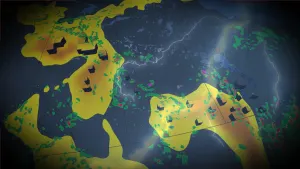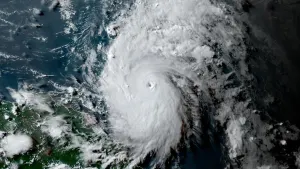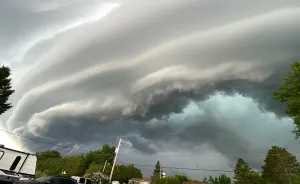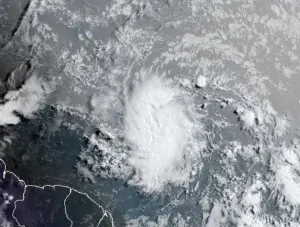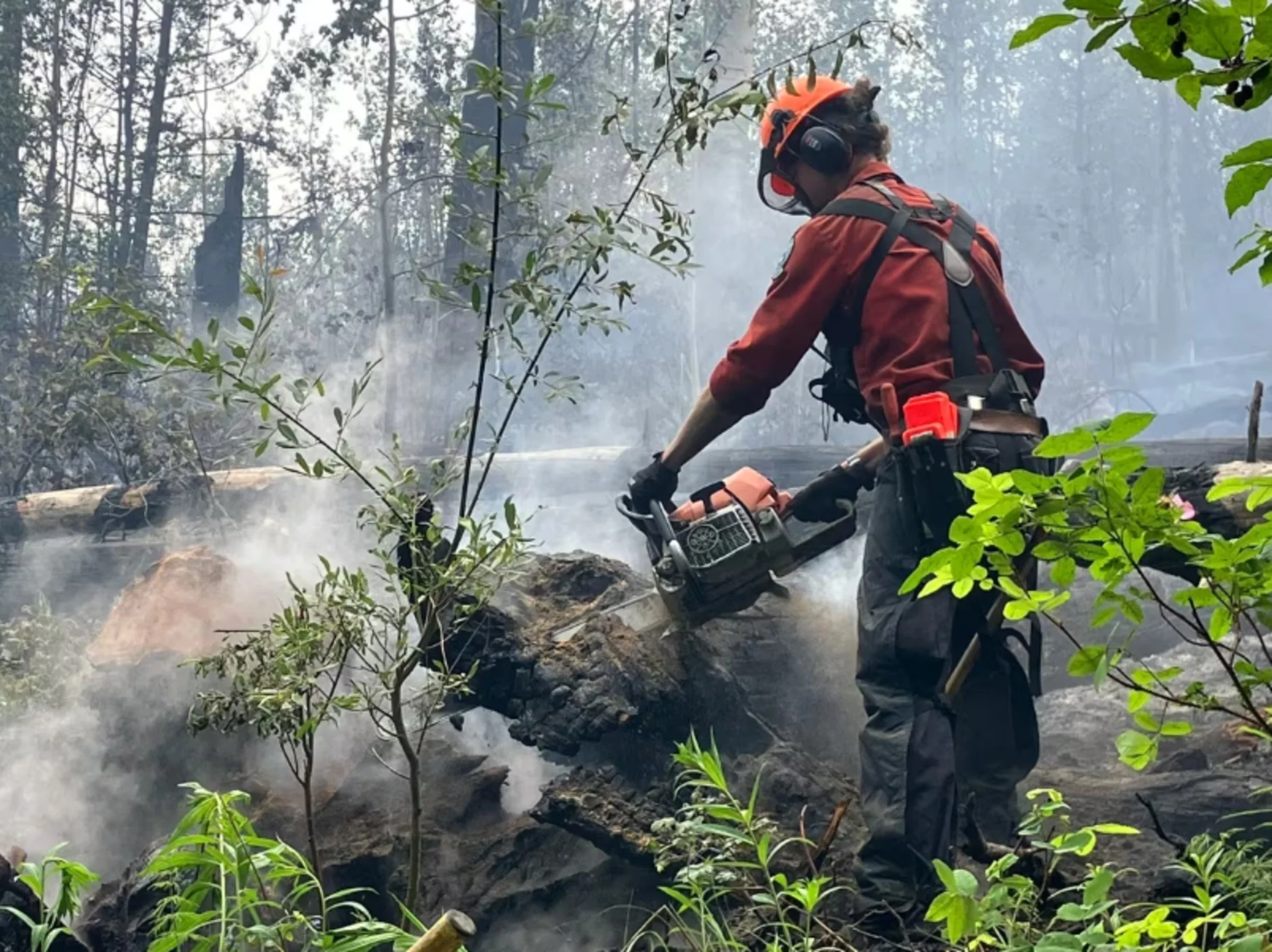
Dozens of Shuswap residents join firefighting crews after training
Visit The Weather Network's wildfire hub to keep up with the latest on the unprecedented wildfire season across Canada.
Over the weekend, a number of residents in British Columbia's Shuswap region received basic training on how to fight wildfires.
The training comes after tensions over the refusal of some residents to obey evacuation orders, to stay behind and fight fires instead.
"We need to be willing to adjust. We need to be willing to evolve. We need to be willing to learn from the things that we're experiencing right now," said Cliff Chapman, director of wildfire operations for the B.C. Wildfire Service, adding the service has been looking to have more people trained to work alongside firefighters.
The Bush Creek East wildfire burning near Adams Lake, which destroyed or significantly damaged nearly 170 properties just over a week ago, is now being tackled by a 300-strong ground crew, including residents recruited to fight the fire.
SEE ALSO: Number of homes destroyed or damaged by wildfire in B.C.'s Okanagan rises to 189
Jay Simpson, area director with the Columbia Shuswap Regional District, said about 50 people from the community received basic fire suppression and safety (S-100) training.
About 25 people who are knowledgeable of the woods — such as loggers — took part in a one-day intensive course, while another group with less familiarity had two days of training, Simpson said.
"Once they get this training they will be basically directed by B.C. Wildfire as to where to go and how to fight a fire."
WATCH: Wildfire smoke creates unusual frame for these wedding photos
Mike McCulley, an information officer with the BCWS, said Monday that basic fire suppression and safety (S-100) training was not provided by the service, but that the province provides a list of instructors that offer S-100 training.
He said nearly 20 contractors are working side by side with BCWS crews in the North Shuswap.
"It's not just about the work, it's about the knowledge that these folks have," he said.
"They're from here. They live on the land. They know what's going on and so we're grateful to have them."
Civilian firefighters will be compensated by the BCWS, says Chapman.
"We are putting these people on hire, working for us, not volunteering," he said.
"So training is a big win that sets the foundation so that people can operate safely. That's ultimately our top priority."
He said the service has been looking to bolster training efforts.
"In terms of the expandability of this, it's actually something that we were highly invested in prior to this fire season. And it's something that we want to expand in terms of capacity at the community level."
300-strong groundcrew battles Bush Creek East wildfire
McCulley said Tuesday was a "day of change'' for the Bush Creek East wildfire.
He said winds may increase fire activity but he didn't expect to see growth of the fire, which is about 430 square kilometres in size.
There was hope for rain in the evening as crews are "consolidated'' around "high-value communities,'' he said, adding there are 80 pieces of heavy equipment aiding the fire fight.
MUST SEE: Photographers capture honest views of weddings during wildfire season
Derek Sutherland, director of the emergency operations centre for the Columbia Shuswap Regional District, said Tuesday that a process has begun to notify residents whose properties have been affected by the wildfire.
Sutherland urged residents to reach out to the centre if they wanted to discuss their properties.
"If need be, we can put them to the top of the list and get them their phone call so we can discuss next steps,'' he said.
Thumbnail courtesy of B.C. Wildfire Service.
This article was originally published for CBC News. Contains files from Marcella Bernardo, Daybreak South and The Canadian Press.






